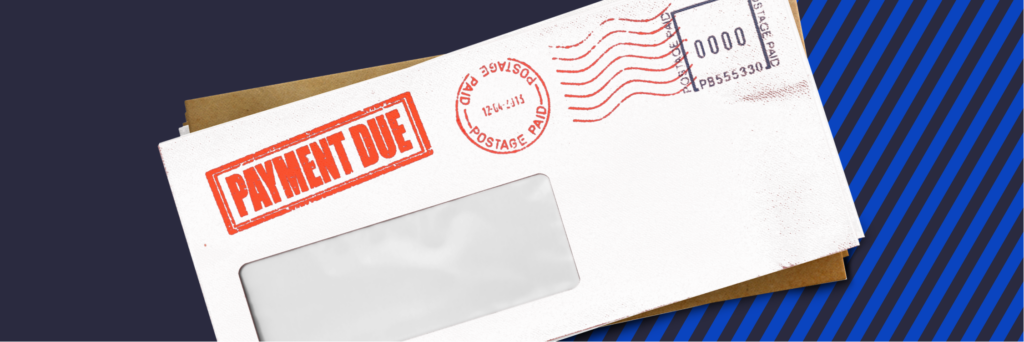“Debt.” It’s a financial four-letter word that you’d rather not talk about. But you know it’s time to face the music and get real with your money. That means doing something about your debt.
Hey, I get it. Life is expensive and stuff happens. Sometimes that stuff requires more money than you have on hand.
Maybe you needed to take out some student loans to get through college and earn your degree. Or you had to hastily pull out the credit card when you were hit with an unexpected (and big) bill.
Regardless of how you found your way into debt, it’s time to get out. And as you may already realize, making the minimum payments isn’t going to provide a real solution.
As Mr. Money Mustache puts it, your debt is an emergency. That means doing everything you can to solve this financial problem and get yourself out of the red.
If you’re ready to start your journey to debt freedom but have never paid more than the minimums on your balances, let’s walk through how to figure out what is the maximum amount you can afford to pay toward debt each month.
Track and Measure Your Money
You can’t manage what you don’t measure — and measuring your money is where you need to start if you want to determine how much you can afford to devote to debt. You need to be able to answer these questions:
How much money do you bring home per month? This should be after taxes and other payroll deductions, like health care costs and retirement account contributions.
If you’re self-employed, the same applies: you want to find what you’re bringing home after you account for your taxes, expenses, and retirement contributions.
What is the total amount of your fixed expenses? Go through your bills and identify your must-pay expenses. These are your fixed necessities — “fixed” meaning the amount you pay doesn’t change and “necessities” meaning you must account for these bills.
Think things like mortgage or rent payments, insurance bills, and utilities. These bills are non-negotiable. They need to get paid.
How much do your flexible expenses cost? These are necessary expenses that aren’t fixed every month. For example, this would include expenses like groceries and gas for your car or a rail pass. Because you can choose between commuting alternatives or cheaper brands at the grocery store, these costs can be pushed up or down, depending on your choices.
Let’s recap where we’re at. So far, this should cover your basic needs:
-
- Housing and Living Expenses
-
- Food
- Transportation
You don’t need to break all your other spending down into other categories. It just needs one: discretionary. As in, wants, nonessentials, not-100%-necessary. Calculate exactly how much you spend on everything else.
If you can’t answer these questions right now, it’s time to start tracking your money. You can do this in a number of ways. Use an online tool if you prefer working digitally, or just use a simple spreadsheet or pen and paper to total up all your expenses, spending, and income for the month.
The only right way is the way that makes sense to you and that you stick with. Choose what method works for you and start tracking your money so you can create a budget and evaluate how much you can afford to pay toward debt.
A Note on Balancing Your Debt with Other Financial Goals
Before we move forward, we need to address something big and important. Note that in the first point in the above section, it’s assumed that you automatically contribute to your retirement account. If you’re not, you need to start!
Yes, debt is your emergency and you need to throw as much money as you can afford toward eliminating it. But this should not mean completely sacrificing your other financial goals, especially saving for retirement.
You need to balance these financial priorities. Depending on your situation, you may need to reduce what you’re contributing to retirement to shed debt — but you shouldn’t stop saving entirely.
Try working off percentages. If you have $500 of discretionary income each month to use for your financial goals, contribute $400 of it to your debt. Put the other $100 towards retirement savings. Aim to at least contribute enough to your retirement savings to get an employer match if one is offered, and put everything else toward your debt.
Evaluating Your Budget
Okay. We’ve measured our money. We understand that you can’t just kick retirement savings to the curb. What’s next?
It’s time to evaluate your budget and determine what can stay and what’s gotta go in order to increase the amount you can afford to pay toward debt each month.
First, let’s subtract all your expenditures — fixed expenses, flexible expenses, and discretionary spending — from the amount of money you bring home each month. If this leaves you…
-
- In the red: If you have debt and are still spending more than you make each month, this is a serious situation. You need to hit the brakes on all discretionary spending right now.
-
- Breaking even: Get ready to examine your discretionary expenses and eliminate some of them. It’s good you’re living within your means now, but you need to focus on creating a larger gap between what you’re spending and what you’re making. Plus, you must save some extra money to put toward that debt!
- With extra cash: If you’re making considerably more than you’re spending, congratulations! This is a great position to be in, and you can afford to focus on paying off your debts each month. (But stay tuned — you can still benefit from cutting costs, too.)
This essentially answers the “how much can I afford to pay toward debt each month?” question. The answer is what you have left in your budget after accounting for all spending. That needs to go straight at your debt repayment plan.
But that may not be the final, or best, answer — especially if you’re breaking even or overspending. This isn’t the best answer if you’re highly motivated to attack your debt, either, even if you have a budget surplus.
Eliminating Expenses and Cutting Costs
It’s time to get mean with your discretionary spending. You need to examine this area of your budget with a highly critical eye. Remember, these are your wants — and your debt gets higher priority than wants, luxuries, and nice things to have.
Are there obvious costs to cut? Are there expenses you can eliminate at least until your debt is paid off? Can you switch to lower-cost alternatives? Can you try new ways to increase your savings?
If you can’t find money to save or spending to suspend, you might need to take one more step to determine how much you can use toward debt repayment. Your flexible and fixed expenses aren’t off limits, and you may want to take action to reduce these as well.
That might mean finding a roommate to help you handle living expenses. It could mean calling your service providers and switching to lower-cost services or asking for less expensive rates. Maybe you need to start clipping coupons and buying generics to lower the grocery bill, or walking when you can instead of paying for gas and public transportation.
Consider every line item in your budget. Be honest and realistic with yourself about what you value. Right now, that should be achieving financial freedom and kicking your debt to the curb!
Keep in mind the more you can reduce your discretionary spending, the more you can afford to pay toward debt each month.




